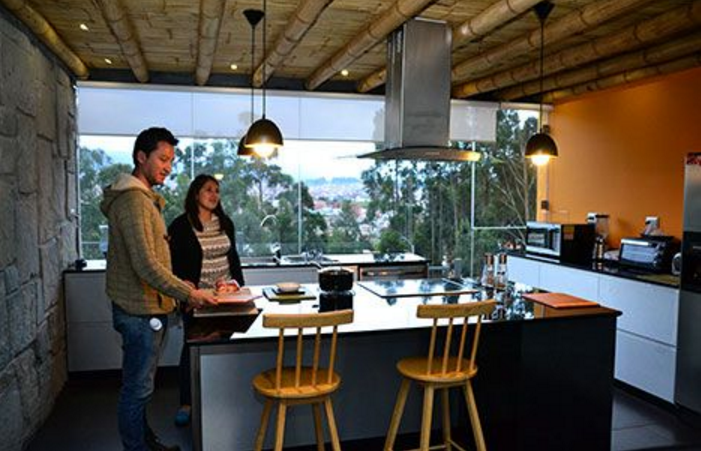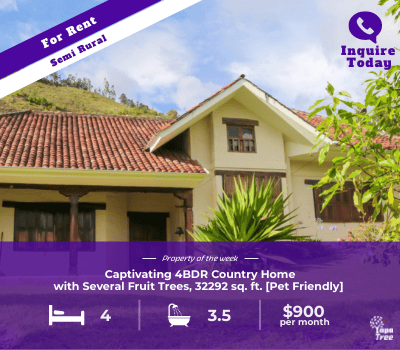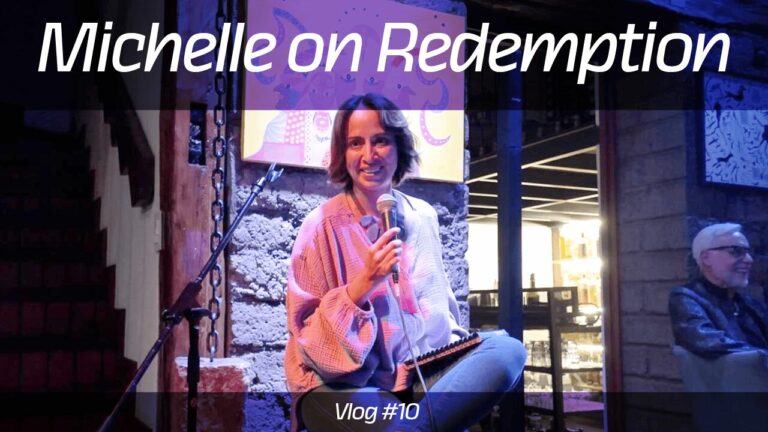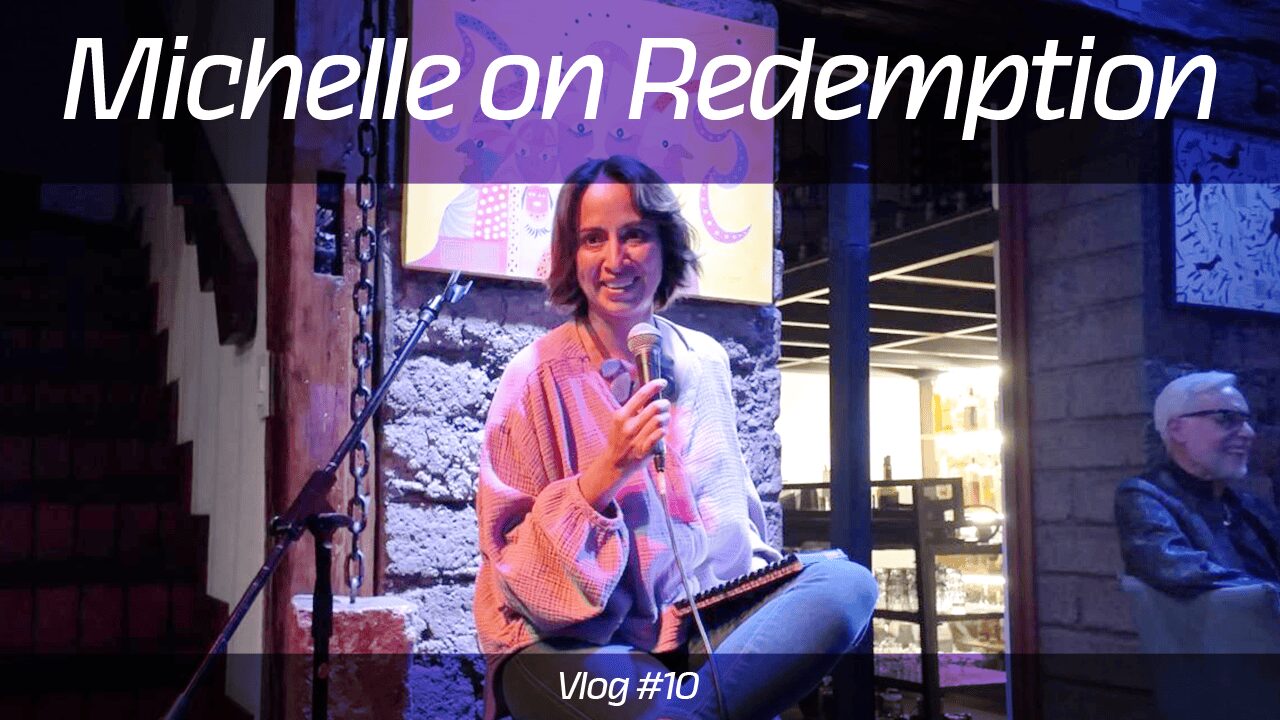Photo by Franklin Minchala.
The main goal of building a bioclimatic or ecologically sound home is to reduce the impact of construction on the environment. Al Cubo Arquitectura, a local company run by Valeria Bustos and Apolo Gavilánez, uses materials such as clay, straw, cane guadua, wattle and daub, and quarried stone to replace the typical blocks, bricks and cement used in regular construction.
“The materials involved in building a house of this kind are typically from the region and are often cheap and easy to get,” Bustos said. Nina Wasi, a home for women in vulnerability, was the first ecohome that the company built. It was constructed on a base of bamboo, wood and “superadobe,” which is clay mixed with fabric burlap bags that make moisture-resistant walls.
“The bamboo cane forms the backbone. It is mixed with mud from the construction site, and with cereal fibers such as rice that we can purchase in Puerto Inca,” said Bustos. “They are economic and sustainable materials and are also tough, flexible and able to resist moisture.”
Advantages
In ecohomes, solar panels are used to warm water naturally, treat waste via a bio-filter, and provide energy for electricity. Also, ecohomes can often use surplus materials or debris from other buildings in construction, maybe making mosaics or parts of the foundation. This approach to homebuilding causes less pollution and involves economic and energy savings.
Architects Bustos and Gavilánez hope to show that it is possible to have a modern and ecological house at the same time, and one that is adapted to the needs of each family.
Cost
A house built with materials such as bricks and cement costs between $80,000 and $100,000. Eco-friendly materials reduce the total cost by 20-30%. The final price for a home, however, always varies depending on the needs and desires of the client.
Spirit Matters
Diego Pesántez, architect and owner of the Arcilla Dorada Company which also builds ecohomes, said that a house of this type “gives and receives energy through the materials that make it up.”
For Pesántez, the relationship that exists between human beings and the house in which they live is important. “In addition to creating a beautiful home, you must be in harmony with the living environment, said Pesántez. “Mud and wood are permeable elements of nature, as well as keepers of spirit. A house is a space where you put your emotions.”
Originally published in el Tiempo as “Casas ecológicas, una alternativa” translated and reprinted here with express permission.





















One Response
me encanto el reportaje de las casa ecologicas, me gustaria saber como poner uno igual pero de la venta de mi casa que llegue el mail asi on la fotos en grande a todos los miembros de gringopost
y cual seria el costo
saludos
sandy